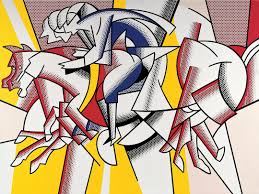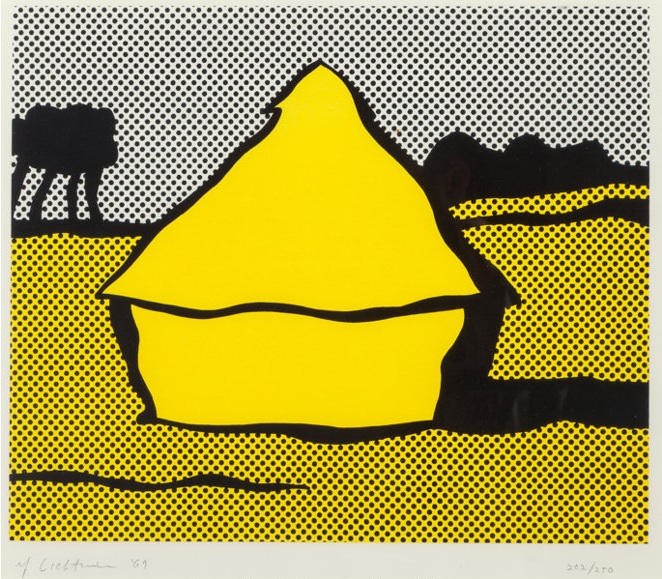Roy Lichtenstein • American (1923-1997)
Crak • Lithograph on Paper 19” x 27”
Is comic book art, art? From 1961-1965 years, this former window dresser at Halle’s Department Store in downtown Cleveland, thrilled the art world with a series of intricate paintings mimicking comic book panels to the finest benday dot. It all started with a challenge from one of his young sons who enjoyed looking at his comic books more than the Abstract Expressionist art his father was becoming well known for. Taking up the challenge, Lichtenstein created an oversized panel titled Look Mickey. It now hangs in the National Gallery of Art in Washington, D.C. How many other fathers could answer a son’s challenge with such panache?
In 1964 Life Magazine looked at his comic book images and asked, “Is He the Worst Artist in the U.S.?” They didn’t get it. Lichtenstein was leading a new art movement: POP Art. POP Artists cast popular culture in a central role. They looked at everyday items and icons in a different light. Where most people saw mundane examples of low-brow culture, Lichtenstein and others saw the potential for high art. They understood how common images formed a new visual language and were determined to use it to communicate their ideas.
(story continues below break)
INTERESTING STORIES FROM OUR SPONSORS

Consider the image of a beret-clad woman screaming French commands while firing a military gun. CRACK! The common comic book style conjures up universal ideas to most people. She is Super-Woman, the embodiment of WWII French resistance. Strong. Powerful. In control and dangerous to all those who threaten her home.
None of these traits would be as easily conveyed if done in any other style of painting. Especially at a time when women were most definitely considered the “weaker sex.” Through the use of common images, Lichtenstein was quickly able to tell the story of a woman backed against a wall by a group of nasty predators and fighting back to fiercely protect her home and family. Using an art style mimicking an industrial printing process gave the image even more power as a soulless commentary on modern attitudes.
CRAK was modeled on a panel from Star-Spangled War Stories, a comic book illustrated by Jack Abel. In Abel’s hands, it was considered low-brow comic strip art. When Lichtenstein took a single, oversized panel and painted it, benday dots and all, it became art … POP art, as ingrained in Pop Culture as comic books and Campbell soup cans.
Canton Museum of Art Permanent Collection • Gifted by the 1001 Gallery 74.20
4 Ways to Sound Smart When Viewing at The Canton Museum of Art
1.
“Low-brow popular culture becomes high art at the hand of a master painter whose son thought comic books had better artists than his dad.”
2.
“He believed that common images were so ingrained in pop culture that they formed a virtual language. One he spoke fluently.”
3.
“Although born in New York, he spent a considerable part of his life in Ohio where he was once a window decorator for Halle Department Stores. Those must have been some wild displays.”
4.
“Much of his art purposely mimicked industrial printing processes, a further commentary on popular culture.”
Lichtenstein Timeline. Scroll over images to see timeline.






















